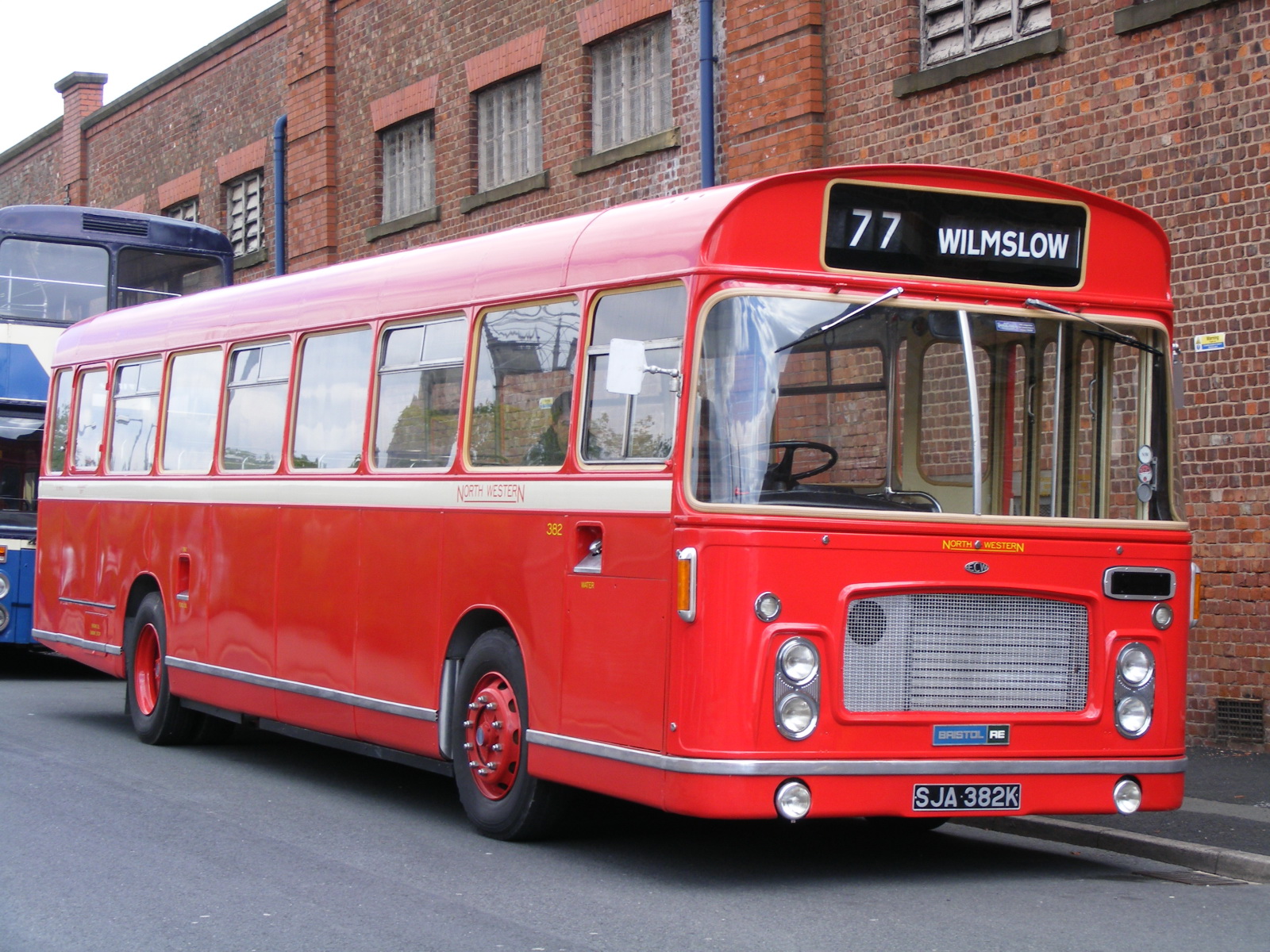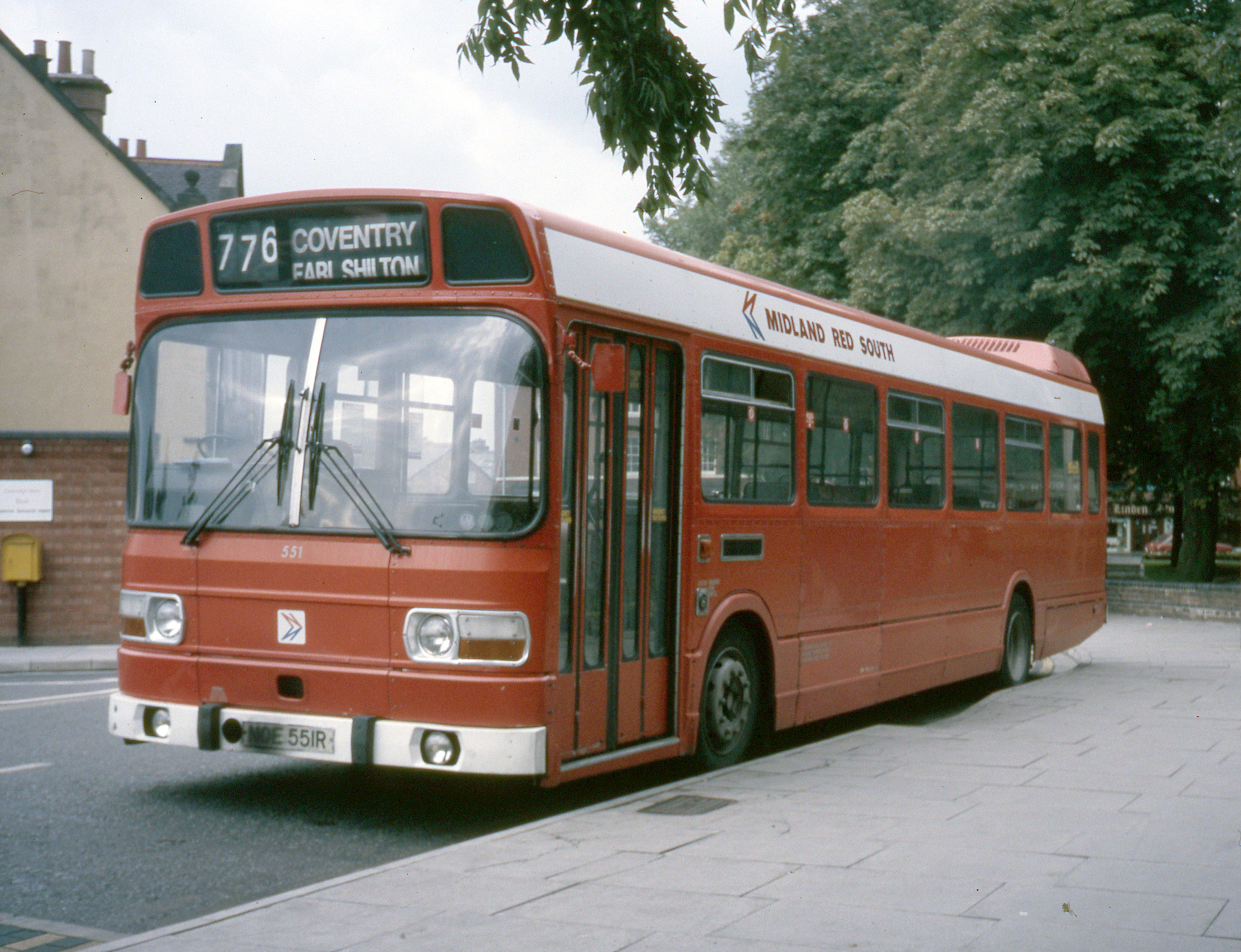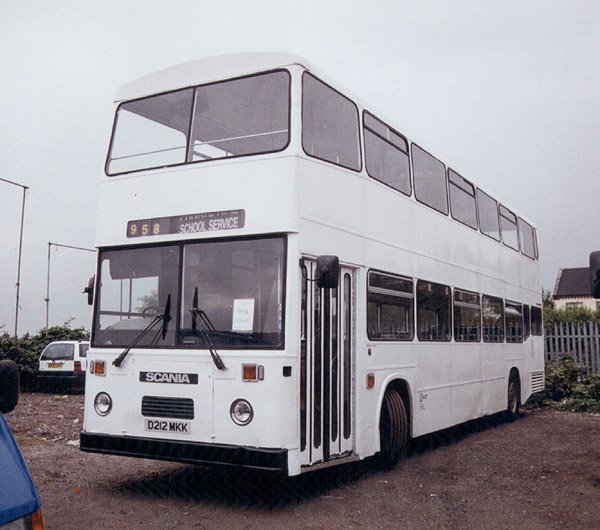|
Chase Coaches
Chase Coaches was a bus company operating in the Black Country. History Chase Coaches was established when Graham Dodd purchased the business of Churchbridge Luxury Coaches. Following deregulation in 1986, bus operations commenced. The livery of white, orange and brown was adopted after the purchase of some former Greater Manchester Passenger Transport Executive Leyland National buses. The original fleet livery was off-white with prussian blue relief. On 25 February 2007, the business was purchased by Arriva Midlands with 27 buses and 40 employees. At the time of the sale, the majority of the fleet were Leyland Nationals, but also included one Ikarus Citibus bodied DAF SB220 and three UVG Urbanstar bodied Dennis Dart SLFs. All the buses apart from the Ikarus and three Darts were sold at auction. The DAF and one of the Darts moved to Shrewsbury depot, with Cannock garage using the other two Darts. Arriva Midlands operated a Leyland National day on 28 April 2007 to commemorat ... [...More Info...] [...Related Items...] OR: [Wikipedia] [Google] [Baidu] |
Leyland National
The Leyland National is an integrally-constructed British step-floor single-decker bus manufactured in large quantities between 1972 and 1985. It was developed as a joint project between two UK nationalised industries – the National Bus Company and British Leyland. Buses were constructed at a specially built factory at the Lillyhall Industrial Estate, Workington. Styling was carried out by the Italian vehicle stylist Giovanni Michelotti, previously commissioned by both Triumph (Herald, TR4, GT6, 2000/2500, 1300, Dolomite and Stag) and Scammell lorries (Routeman GRP cab). It was intended to replace all the rear-engined single-decker buses offered by British Leyland, including the AEC Swift, Bristol RE, single-deck Daimler Fleetline, Daimler Roadliner and Leyland Panther. Design The Leyland National was built with integral, modular construction and a rear engine. All components were designed for ease of construction and replacement. Until 1978, it was always built ... [...More Info...] [...Related Items...] OR: [Wikipedia] [Google] [Baidu] |
East Lancashire Coachbuilders
East Lancashire Coachbuilders Limited was a manufacturer of bus bodies and carriages founded in 1934 in Blackburn, Lancashire, England. The company went into administration for a short while in August 2007, before being bought by Darwen Group and performed a reverse takeover with Optare when its parent purchased the company in 2008 and its site and business was later closed in 2012. History In 1994 the company expanded into new premises and commenced a programme of development that resulted in a range of single and double deck buses which was the primary source of income for the company. On 17 August 2007, the company went into administration but was saved and bought out by the Darwen Group the next day. It is thought that the problem was a direct consequence of changing to the Euro IV chassis, with a shortage of Scania chassis being a factor. After the purchase, the Darwen Group rebranded the company as Darwen East Lancs. In 2008, Jamesstan Investments, an investment compan ... [...More Info...] [...Related Items...] OR: [Wikipedia] [Google] [Baidu] |
Crosville
Crosville Motor Services was a bus operator based in the north-west of England and north and mid-Wales. History On 27 October 1906, Crosville Motor Company was formed in Chester by George Crosland Taylor and his French business associate Georges de Ville, with the intention of building motor cars. The company name was a portmanteau on the names of the founders. In 1909, Crosville commenced its first bus service, between Chester and Ellesmere Port. By 1929 Crosville had consolidated an operating area covering the Wirral and parts of Lancashire, Cheshire and Flintshire. The Railways (Road Transport) Act, 1928 gave the four railway companies the opportunity to provide bus services. But rather than run in competition they bought into or purchased outright existing bus companies. In February 1929, the London, Midland and Scottish Railway made an offer of £400,000 to purchase Crosville, which was effected in November 1929. The new LMS (Crosville) company then in the next few mon ... [...More Info...] [...Related Items...] OR: [Wikipedia] [Google] [Baidu] |
London Transport (brand)
London Transport (LT) was the public name and brand used by a series of public transport authorities in London, England, from 1933. Its most recognizable feature was the bar-and-circle 'roundel' logo. With its origins in the Underground Electric Railways Company of London (UERL), the brand was first used by the London Passenger Transport Board (LPTB) to unify the identity of the previously separately owned and managed London Underground, Metropolitan Railway, bus and tram services. The London Transport brand was extended under the direction of Frank Pick to all aspects of transport operation including poster designs, tickets, train livery, seat upholstery and the station architecture of Charles Holden. When public transport operation was taken over by Transport for London (TFL) from London Regional Transport (LRT) in 2000, the London Transport brand was discontinued and replaced with Transport for London's own branding, which incorporates many features of the London Transport bran ... [...More Info...] [...Related Items...] OR: [Wikipedia] [Google] [Baidu] |
Brownhills
Brownhills is a town and former administrative centre in the Metropolitan Borough of Walsall, West Midlands, England. A few miles south of Cannock Chase and close to the large Chasewater reservoir, it is northeast of Walsall, a similar distance southwest of Lichfield and miles north-northwest of Birmingham. It is part of the Aldridge-Brownhills parliamentary constituency and neighbours the large suburban villages of Pelsall and Walsall Wood. It lies within the boundaries of the historic county of Staffordshire. The town lies close to the route of the ancient Watling Street, and although there is no record of its existence before the 17th century, Ogley Hay – a district of the town today – is recorded as a settlement in the Domesday Book. Brownhills quickly grew around the coal-mining industry, especially after the town became linked to the canal and railway networks in the mid-19th century. By the end of the century, Brownhills had grown from a hamlet of only 300 inhab ... [...More Info...] [...Related Items...] OR: [Wikipedia] [Google] [Baidu] |
Cannock
Cannock () is a town in the Cannock Chase district in the county of Staffordshire, England. It had a population of 29,018. Cannock is not far from the nearby towns of Walsall, Burntwood, Stafford and Telford. The cities of Lichfield and Wolverhampton are also nearby. Cannock lies to the north of the West Midlands conurbation on the M6, A34 and A5 roads, and to the south of The Chase, an Area of Outstanding Natural Beauty (AONB). Cannock is served by a railway station on the Chase Line. The town comprises four district council electoral wards and the Cannock South ward includes the civil parish of Bridgtown, but the rest of Cannock is unparished. History Cannock was in the Domesday Book of 1086. It was called Chnoc c.1130, Cnot in 1156, Canot in 1157, and Canoc in 1198. Cannock is probably Old English cnocc meaning 'hillock', modified by Norman pronunciation by the insertion of a vowel to Canoc. The name may refer to Shoal Hill, north-west of the town. Cannock was a small ... [...More Info...] [...Related Items...] OR: [Wikipedia] [Google] [Baidu] |
Walsall
Walsall (, or ; locally ) is a market town and administrative centre in the West Midlands (county), West Midlands County, England. Historic counties of England, Historically part of Staffordshire, it is located north-west of Birmingham, east of Wolverhampton and from Lichfield. Walsall is the administrative centre of the wider Metropolitan Borough of Walsall. It was transferred from Staffordshire to the newly created West Midlands County in 1974. At the 2011 census, the town's built-up area had a population of 67,594, with the wider borough having a List of English districts by population, population of 269,323. Neighbouring settlements in the borough include Darlaston, Brownhills, Pelsall, Willenhall, Bloxwich and Aldridge. History Early settlement The name Walsall is derived from "Walhaz, Walh halh", meaning "valley of the Welsh", referring to the Celtic Britons, British who first lived in the area. However, it is believed that a manor was held here by William Fitz-An ... [...More Info...] [...Related Items...] OR: [Wikipedia] [Google] [Baidu] |
Bristol LH
The Bristol LH was a single-decker bus chassis built by Bristol Commercial Vehicles (BCV) in Bristol, England. Nearly 2,000 were built between 1967 and 1982 in a variety of sizes and body types, including some as goods vehicles. Models The LH designation stood for Lightweight chassis, Horizontal engine. It replaced the Bristol SU and was succeeded by the Leyland National B Series for operators in need of a small or lightweight bus. The Bristol RE was in production at the same time for those in need of larger or more robust vehicles. The standard Bristol LH model was long. It was also available as the LHS (LH Short) and the LHL (LH Long). The width of the chassis was but bodies as wide as the then maximum width, could be fitted, wide-bodied LHs have the wheels slightly inset in the wheelarches as a result. The bus was available with a choice of six-cylinder diesel engines, either the Leyland O.400 (later replaced by the Leyland O.401) or the Perkins H6.354. The 5.8 litre H ... [...More Info...] [...Related Items...] OR: [Wikipedia] [Google] [Baidu] |
AEC Reliance
The AEC Reliance was a mid-underfloor mounted engined single-decker bus and coach chassis manufactured by AEC between 1953 and 1979. The name had previously been used between 1928 and 1931 for another single-decker bus chassis. History Two prototypes were completed in 1953, one with Duple coach bodywork and one with Park Royal bus bodywork. Production vehicles entered service from 1954. The last Reliance entered service in 1981. Following successive changes to Construction & Use regulations, the maximum length of the Reliance was increased twice from the original 30 feet: firstly, to permit an overall length of 36 feet from 1962; and later, to permit a length of 39 feet. Various AEC engines were fitted during the chassis's production, including the 7.7-litre AH470, 8.1-litre AH505, 9.6-litre AH590, 11.3-litre AH691 and 12.4-litre AH760. Transmissions fitted to the Reliance include an AEC synchromesh gearbox, AEC ''Monocontrol'' semi-automatic epicyclic transmission, and ZF ... [...More Info...] [...Related Items...] OR: [Wikipedia] [Google] [Baidu] |
Bristol RE
The Bristol RE was a rear-engined single-decker bus or single-decker coach chassis built by Bristol Commercial Vehicles from 1962 until 1982. It is often considered the most successful of the first generation of rear-engined single-decker buses. Initially, the RE was only supplied to subsidiaries of the nationalised Transport Holding Company (THC), by which Bristol was wholly owned. From 1965, when Leyland purchased a 25% shareholding in Bristol and the company's products became available to non state-owned bus operator customers, the RE also gained popularity with companies in other sectors, including the British Electric Traction (BET) Group and many municipal operators. From 1972, sales to the National Bus Company (NBC), which had taken over the operations of both THC and BET) began to dry up, due to the introduction of the Leyland National. From 1976, the RE remained in production only for the Northern Irish state-owned bus companies Ulsterbus and Citybus, and for export ... [...More Info...] [...Related Items...] OR: [Wikipedia] [Google] [Baidu] |
Eastern Coach Works
Eastern Coach WorksCompanies House extract company no 318856 318856 Limited formerly Eastern Coach Works Limited was a bus and train bodybuilder based in , England. History 
 The origins of Eastern Coach Works (ECW) can be traced ...
The origins of Eastern Coach Works (ECW) can be traced ...
[...More Info...] [...Related Items...] OR: [Wikipedia] [Google] [Baidu] |
Leyland Leopard
The Leyland Leopard was a mid-engined single-decker bus and single-decker coach chassis manufactured by Leyland between 1959 and 1982. History The Leyland Leopard was introduced in 1959. It was developed from the Leyland Tiger Cub, one of the most important changes being the introduction of the larger and more powerful O.600 engine (later-built Leopards were fitted with the 11.1-litre O.680 engine). The Leopard was superseded by the Leyland Tiger. Designation The original 30 ft bus version was coded L1, it was right hand drive with a 16 ft 2in wheelbase and an overall length of 29 ft 4in. The 30 ft coach was the L2 which had the same wheelbase but was an inch shorter overall, the left-hand-drive LHL1 shared the wheelbase but the overall length was 29 ft 2in. All had a swept turning circle of 68 ft. The initial 36 ft models launched at the 1961 Scottish Motor Show at Kelvin Hall all shared an 18 ft 6in wheelbase, the PSU3.1R PSU3.1L ... [...More Info...] [...Related Items...] OR: [Wikipedia] [Google] [Baidu] |




_Artist's_Impression.jpg)

%2C_31_March_1989_(2).jpg)